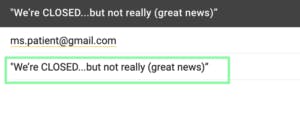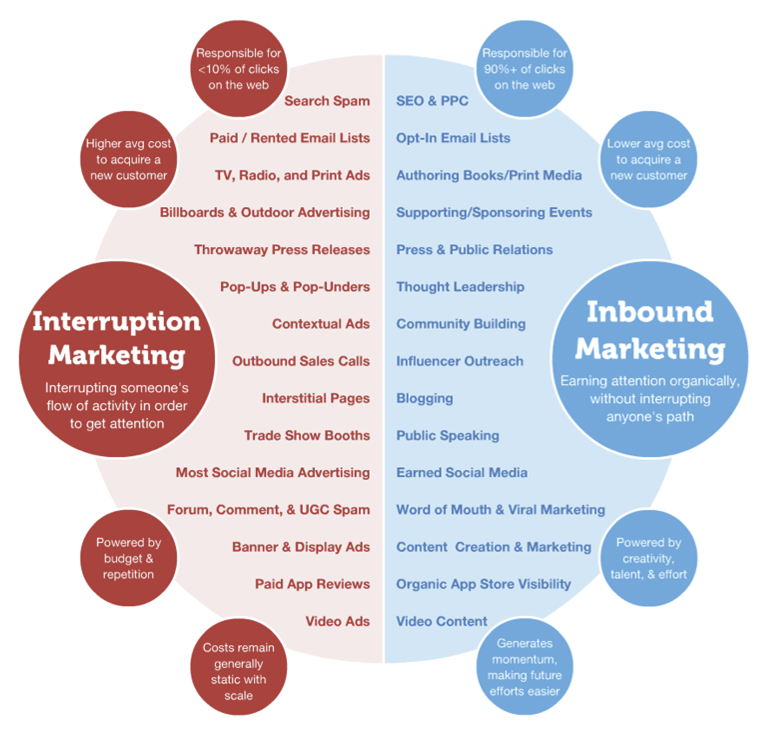Whether you’re just starting your PT private practice or you’ve been running your clinic for a few years, during these times you have to be efficient with spending money on physical therapy marketing. For the savvy PTPP director who wants to save some money, here are some tips for marketing on a budget.
#1 Find Some Local Online Facebook Groups

You may be open and still treating patients, or you may be just doing telehealth; either way, you can leverage your community to market your business. Get your name out there by sponsoring local Facebook groups where moms gather, sports teams gather (e.g. a running club), or your neighbors gather. Get creative about offering value. How can you help members of the group? Offer to speak on a Zoom webinar where share your expertise. This will boost awareness about your practice help you make one-on-one connections.
#2 Be Ready with a One-Liner, Talking Logo, or Elevator Pitch

If someone asks you what you do, does your answer put them asleep, confuse them, or arouse curiosity?
Another way to describe your business to another is with what John Jantsch calls, a talking logo. John describes a talking logo as follows: “a tool that allows you to communicate verbally the single greatest benefit of doing business with your firm. A talking logo is a short statement that quickly communicates your firm’s position and ideally forces the listener to want to know more.” (more here)
Yet another way to think about it is by simply following this formula: “I help x get y using z.” An example might be: “I treat people in pain naturally recover with nothing more than my hands and mouth.” If you were speaking with someone the first time, can you see how this type of answer invites additional questions? Fast, concise, and arousing curiosity are the keys to developing a good one-liner or talking.
#3 Network with Other Local Businesses

Find other businesses that you believe in and make connections with them. Offer them your willingness to promote them if they’ll do the same for you. You could even come together for a community event and refer potential customers to each other.
Massage therapists, yoga instructors, personal trainers, acupuncturists, running, swimming, and sports equipment stores and of course medical doctors are some examples of companies you can cross-promote. Make a list and start reaching out.
No matter how it looks, it’s a win for you and a win for the other businesses in your community.
#4 Take Advantage of Free Social Media

We all know that there are countless social media platforms out there, and it can seem a little overwhelming. But the good news is that it is either free or very inexpensive to market your business through this medium.
If you are looking to treat middle-aged and senior patients then Facebook is the platform you should use. If you are looking for the younger 20-35 y.o. crowd, then Instagram is a good place to start.
But here’s a quick tip: your goal is to nurture relationships by showing interest in them, providing good content and by asking others how you can help them. One surefire way to kill your reputation is to look self-serving. Following someone else on IG hoping to get a follow back won’t likely foster your relationships. Social media is meant for socializing. Imagine if you were at a party and you approached a group of others, you would disrupt the gathering of people by trying to get everyone to focus their attention on you right away.
#5 Create and Publish Great Content

Sharing helpful content is important. As the saying goes, content is king. Not only does it establish you as an authority and increases practice awareness, but it also helps people. Of course, you don’t have to spend any money to create great content (if you someone at your practice is willing to do create the content on their own). If you’ve got older content, an easy way to get the message is out is by simply refreshing that old content. Add some graphics, update the content, add a new take on an age-old issue… whatever the case may be, don’t reinvent the wheel if you don’t have to.
#6 Call Up Your Referring Physicians

Believe it or not, many physicians are in the same boat as you are during this COVID crisis. Give your referring physicians a call. Ask them questions about how they are doing, their staff, their family. See how many patients they are seeing now. Offer to help them out. Ask how telehealth is working for them. Offer to help them promote their practice or find a collaborative opportunity. Offer to do a video conference call, record it and share it to your email list or Facebook fans.
#7 Email an Offer to Your List. You Could Offer a Free Telehealth Session
Many are just now experiencing how health care is delivered via remote video conferencing with systems like doxy, Zoom, Vsee, BetterPT, etc. When it comes to a hands-on provider like a physical therapist, the notion of communicating online assessments and treatment seems like a contradiction (when coming from a PT).
One way to start the conversation and to get people to consider your physical therapy services is to email them an offer. Here’s how you can do this:
- Get a list of first names and email addresses. Go to your EMR system and download a list of email addresses and names. I am assuming that you have permission to email your patients.
- Send out an email blast. You want to put together a personalized message, first name only, and use a subject line like this:

Remember, the goal of the subject line is to get them to open the email message.
- Get them to “click” to the next step. In the body of the message, you need to make a compelling offer. Let your past patients know how you’re STILL able to serve them during this crisis – but it’s in a slightly different way. Remember, the goal of the email message, in most cases, is to get them to click on a link to do something next.
- Give them something of value. Offer a free 15-minute “virtual” mini-evaluation to get them on the phone to see where they need the most help and let them know about your virtual services, or if you’re still open, to see if they are good candidate to come in for some therapy.
For some, this might be the solution they are looking for. If it is a valuable, compelling offer, your past patients will take you up on it. If not, think of another offer. Most marketing campaigns fail on the first try; so, don’t be afraid to try again.
#8 Ask Your Patients for Referrals

Whether it be during a video conference or in person, ask your patients for referrals. This is how you can accomplish this.
- First find out if your patient is willing. Take their “temperature” by finding out how satisfied they are with your services. If you get a lot of positive feedback and you sense they are very pleased, then you can move to the next step.
- Ask an open-ended question. Don’t make the mistake of asking, “Do you know someone else I can help?” That’s a closed-ended question that will result in a yes or no.
- Take it slower with multiple, open-ended questions like:
- “Who do you know that has a problem like you?”
- “What have they done to deal with their pain?”
- “What are you thoughts about how they might respond to this kind of treatment?”
- “How could I work with you to see if they might benefit from what I’m doing with you?”
Knowing when and how to ask your patients for referrals will increase the likelihood of success. Give it a try and understand you’ll either get a No (in which case you’ll improve your ability to ask for a referral from your next patient), or you will get a Yes and you might be able to help them.
NOTE: if you do get a name from your patient, make sure you complete the process by having your patient make a warm introduction. Be willing to do a simple conference call with the patient and their family member or friend to take it to the next step.
#9 Increase the Value of Your Business Card and Add a QR Code

Business cards are cheap these days. Take a look at yours. Does it need a redesign? Can you add services on the back? How about a QR code that when scanned take the viewer to a video about you on YouTube or a web page where they can learn more about what you do, or perhaps to a page where you make them an offer?
QR codes were popular back in the 2008-2012 timeframe; but, the need for users to install a QR reader app on their phone made them a challenge to use. Back in September, 2017 when Apple released iOS 11, iPhone cameras became readers. Simply point the camera app at a QR code and it reads it.
Get creative with QR codes. Head over to QRstuff.com and create your own.
#10 Seek Out Recognition for Your Great Work

Believe it or not, it costs nothing to apply for business awards for your niche. If you are selected, you can tout that award on your website or on your front desk. This is a nice way to add credibility to your physical therapy services and it gives you another thing to write about in your social media posts.
As of the date of this post, I’ve been in the PT private practice marketing space for almost 20 years. If there’s one thing I can share with you that is going to dramatically increase your odds of success it’s these 3 things: One, take action. Most just read about marketing and never take any action. Two, make sure you invest in your marketing. Marketing pays dividends and gives you returns. Sometimes your investments result in a loss but then you learn. Sometimes they provide you with a good profit. This leads me to my third point, persistence. Marketing is an ongoing process over time. It never stops. The more you do it, the more you learn and improve that process.
Working within Your Budget
You might think it is difficult to market your practice on a small budget. There is some truth to this. After all, you might be up against large hospitals, corporate big-box clinic chains, and POPTS clinics. The resistance is proportional to the reward though. If you want to generate patients that might net you up to $1000 when you complete a plan of care with them, it’s going to take some work.
Looking for the Best Online Marketing Services on a Budget?
E-rehab.com provides different packages of marketing services, training and tools to help you generate more new, repeat, and word-of-mouth business.
For more information about how we can help, click here to schedule some on my calendar and we can discuss your needs.
























